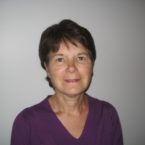Abstract
Background:
Amplification is considered to be one of the most important interventions for children with hearing loss. However, achieving consistent use of hearing technology in young children is an important problem, particularly when hearing loss is of mild degree. Little information is available about amplification use specifically for children with mild bilateral or unilateral hearing loss when such losses are targeted and identified early because of the availability of newborn hearing screening.
Purpose:
We examined amplification use in a contemporary cohort of early-identified children with mild bilateral and unilateral hearing loss.
Research Design:
As part of the Mild and Unilateral Hearing Loss in Children Study, we collected parent reports on their child’s use of amplification during the preschool years.
Study Sample:
A total of 69 children (38 unilateral and 31 bilateral mild) enrolled in the study from 2010 to 2015. Children entered the study at various ages between 12 and 36 mo of age and were followed up to age 48 mo. The median age of the children at enrollment was 16.5 mo (interquartile range [IQR] = 9.5, 26.8). Hearing loss was confirmed in these children at a median age of 3.6 mo (IQR = 2.4, 5.7).
Data Collection and Analysis:
Baseline characteristics related to the child and family were collected through an intake form at study enrollment. Data on amplification fitting and use were collected via parent questionnaires at each assessment interval. Information from parent questionnaires was summarized descriptively and amplification use was grouped into categories. Through logistic regression, we examined the relationship between amplification use and laterality of hearing loss, sex, and maternal education.
Results:
Amplification was recommended for 59 (85.5%) children at a median age of 6.5 mo (IQR = 3.6, 21.2) and children were fitted at a median age of 10.9 mo (IQR = 6.0, 22.1). Based on parent report, hearing aid use was consistent for 39 (66.1%) of 59 children who had amplification recommended. Parent questionnaires showed very little change in use for most of the children over the study period. More children with bilateral hearing loss used their amplification consistently than those with unilateral hearing loss. After adjusting for maternal education and sex of the child, the odds for consistent use in children with mild bilateral loss was almost seven times higher (odds ratio = 6.75; 95% confidence interval = 1.84, 24.8) than for those with unilateral loss.
Conclusions:
Although 85.5% of children with mild bilateral or unilateral hearing loss received amplification recommendations, only two-thirds achieved consistent use by age 3–4 yr based on parent report. Children with mild bilateral loss were more likely to use amplification during the preschool years than those with unilateral loss.
Researchers
-
Elizabeth Fitzpatrick
Senior Scientist, CHEO Research Institute

